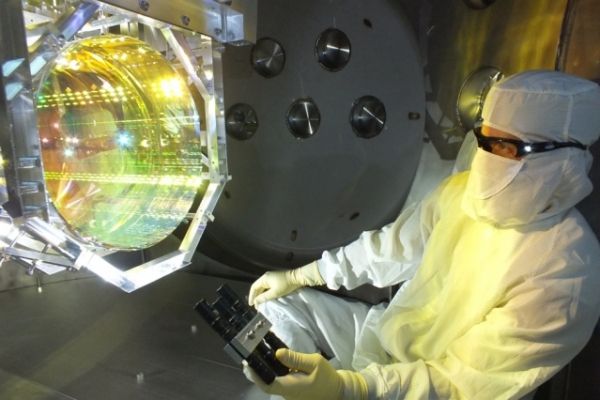The universe, as seen through the lens of quantum mechanics, is a noisy, crackling space where particles blink constantly in and out of existence, creating a background of quantum noise whose effects are normally far too subtle to detect in everyday objects.
Now for the first time, a team led by researchers at MIT LIGO Laboratory has measured the effects of quantum fluctuations on objects at the human scale. In a paper published today in Nature, the researchers report observing that quantum fluctuations, tiny as they may be, can nonetheless “kick” an object as large as the 40-kilogram mirrors of the U.S. National Science Foundation’s Laser Interferometer Gravitational-wave Observatory (LIGO), causing them to move by a tiny degree, which the team was able to measure.
It turns out the quantum noise in LIGO’s detectors is enough to move the large mirrors by 10-20 meters — a displacement that was predicted by quantum mechanics for an object of this size, but that had never before been measured.
Read more at Massachusetts Institute of Technology
Image: MIT physicists have observed that LIGO’s 40-kilogram mirrors can move in response to tiny quantum effects. In this photo, a LIGO optics technician inspects one of LIGO’s mirrors. Credit: Matt Heintze/Caltech/MIT/LIGO Lab


